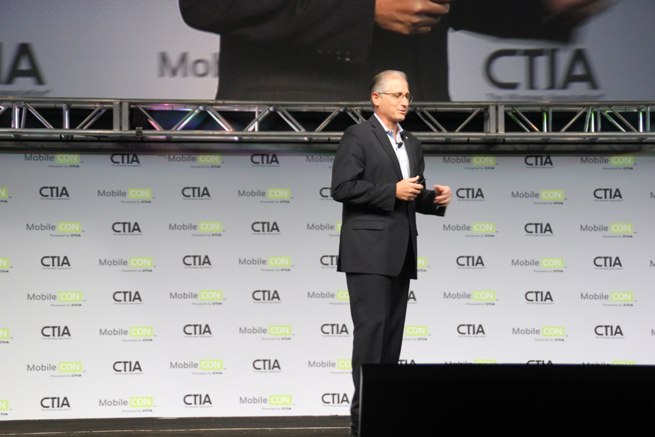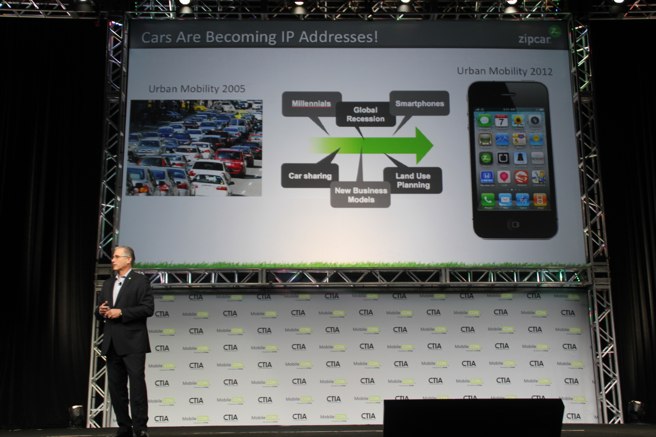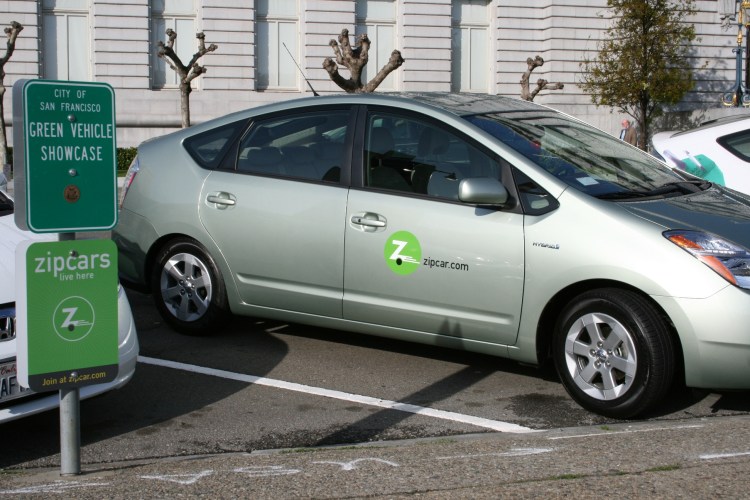
SAN DIEGO, Calif. — Car sharing network Zipcar is putting a lot of functionality into its mobile app, after so many of its users — a generation of people 35 and under who prefer 4G to V8 — showed they prefer to interact with the company from their smartphones, company chairman and CEO Scott Griffith said Tuesday at the MobileCON conference.
Zipcar is the Cambridge, Mass.-based company that manages a fleet of more than 10,000 for-rent vehicles spread across 19 metropolitan markets and now 300 college campuses. The 12-year-old car sharing network has more than 730,000 members and expects 1 million customers around the start of 2013. The company booked 4 million total reservations in 2011.
Griffith focused his talk, directed at enterprise and IT types tasked with thinking about how to mobilize workforces, around the “mobility society,” or a society made up of Millennials whose lives are centered around the devices they tote around in their pockets, and whose decisions are forcing new business models.

Above: Cars becoming IP addresses
Millennials, said Griffith, no longer define freedom in terms of car ownership, choosing unfettered access to the information highway over buying a vehicle to navigate actual ones. To meet the needs of this group of 79 million always-on Americans, Zipcar has been forced to rethink the reservation system and in-car experience with mobile in mind.
“We used to think in terms of the browser,” Griffith said. “Now we think in terms of mobile devices, mobile operating systems.”
Nearly all of Zipcar’s customers, or 94 percent as of 2011, are smartphone owners. By mid 2011, the company crossed a telling threshold: 50 percent of all Zipcar activity was happening on mobile devices.
Today, Zipcar’s mobile application allows consumers to find, reserve, unlock, and end car reservations. In the near feature, the application will allow would-be customers to join the service through mobile by uploading a driver’s license photo and getting approved within minutes, Griffith said.
Also on the immediate agenda is a digital copilot, embedded in the Zipcar application, that will allow drivers to check the fuel level or battery life before booking a car and read up on how to operate the car they’ve selected once inside the vehicle. The company is putting a cell phone holder in every car so that customers can dock phones and interact with the app as needed.

Above: Zipcar’s mobile growth
Zipcar is working on a method for sending text messages to valet drivers so that customers can notify valets before they’re ready to take off. The company is also interested in directing nearby merchant offers to drivers and offering more personalization features — all powered by mobile, of course.
Griffith preached the message of reaching Millennials through mobile (and college campuses) like a pastor versed in the scriptures, but he failed to address that Zipcar, mobile-friendly as it may be, is at risk of being uprooted by nimbler, even more mobile car sharing companies such as Getaround and Car2Go.
In fact, the company’s stock price has been struggling of late, in part because Zipcar lowered its fiscal year 2012 guidance and also because the incumbent faces a wealth of competition from upstarts.
“Our story is linked directly to the growth of mobile networks,” Griffith said.
Perhaps, then, Zipcar should press the gas pedal even harder on its mobile initiatives.


